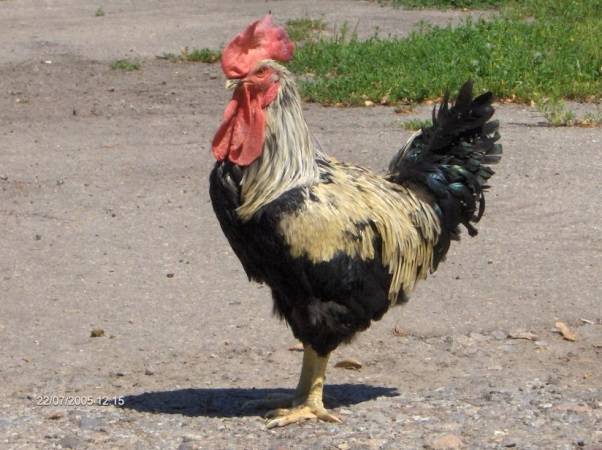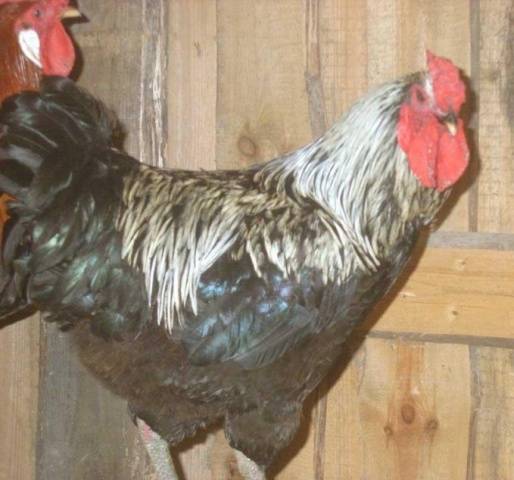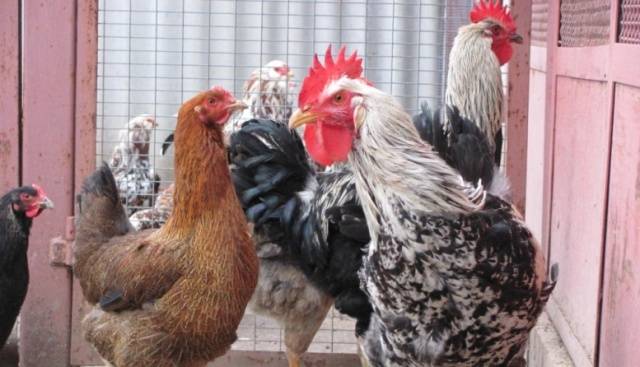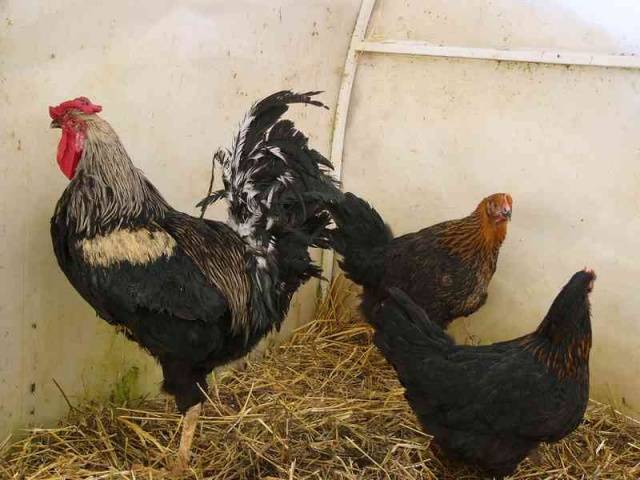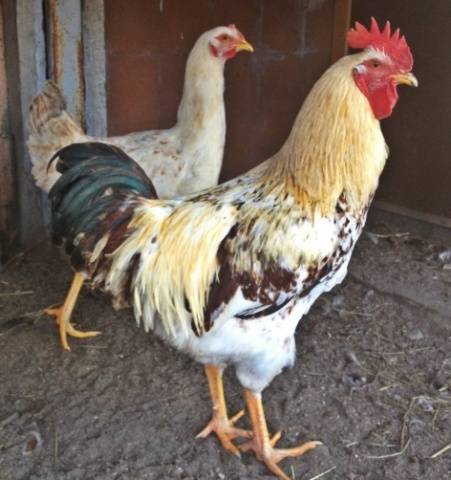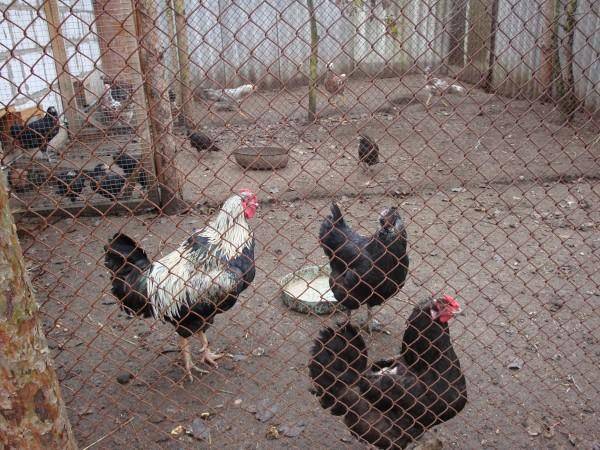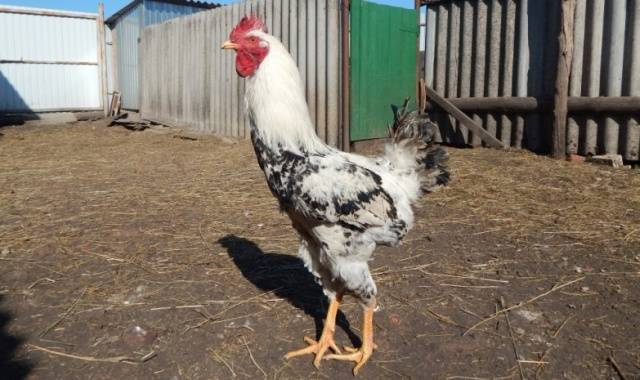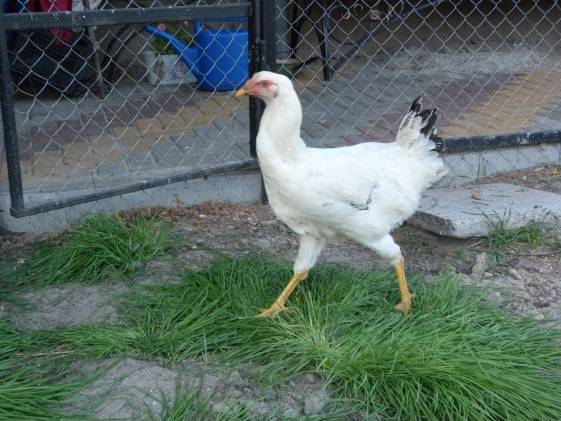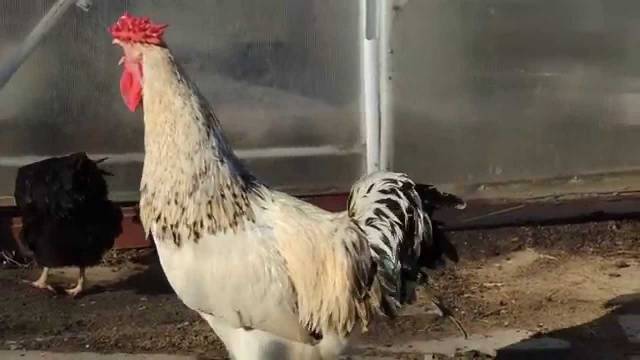Content
The love of the Russian people for the morning rooster singing led to the emergence of a breed of chickens, whose main task was not to provide the owners with eggs or meat, but to beautiful rooster singing. The Yurlovskaya vociferous breed of chickens appeared thanks to "folk selection", when the tribe of roosters was selected for the beauty of their singing, without paying special attention to their appearance. Stories about the fact that Count Orlov-Chesmensky was a breeder-multivalent and, in addition to horses, bred two more breeds of chickens: Orlovskaya and Yurlovskaya, do not have documentary confirmation.
A more plausible version says that the Yurlovskaya chicken breed appeared near the city of Livny, which is located almost on the southern border of the Oryol region. Previously, not far from Liven stood the now defunct village of Yurlovo, from which the chickens took their name.
Origin and description
The origin of the breed is not known for certain. It is well established that she is not related to other "singing" chickens. It is believed that the Yurlovskaya breed of chickens appeared as a result of crossing Chinese meat chickens and Asian fighting birds with local "village" layers. In the future, the selection of roosters was based on their singing qualities. Moreover, the standard start of the cock crow was considered undesirable, and the cock had to sing as long as possible.
Good singing is impossible without a certain body structure, therefore, in parallel with the selection by voice, the formation of the exterior of the Yurlovskiye voiced was going on. Even in the absence of knowledge of breeding, fans of rooster singing unwittingly selected roosters of a certain type. Today Yurlovskiy chickens are relatively few in number, and fans of this breed select not only for singing, but also for the exterior.
This is due to the fact that unscrupulous breeders nowadays infuse the Yurlovsky vocal Turkish breed of Denizli chickens.
Standard
In the absence of official directions "fighting" and "singing" in modern chicken breeding, the Yurlov breed is referred to the meat and egg type. This is a fairly large chicken, but there is a significant variation in live weight in the population:
- adult chickens 3-3.5 kg;
- in adult males the spread is greater: 3.5–5.5 kg.
In males, this difference is due precisely to selection for singing, and not for production characteristics.
Outwardly, adult roosters give the impression of a very powerful large bird. The frosty male is exactly that, as can be clearly seen from the photo of the rooster of the Yurlovsky breed of chickens.
Exterior requirements for a rooster
Large head with a round nape. The beak is powerful, strong curved. Depending on the color of a particular bird, the beak is dark bronze, black or yellow. There is a fold on the lower half of the beak. The color also affects the color of the eyes: red, brown or red. In healthy chickens, the eyes should be clean and shiny. The brow ridges are large.
The crest can be of almost any shape: leaf-shaped, pink-shaped, walnut-shaped or pod-shaped. The pod-shaped and leaf-shaped ridges should clearly follow the line of the occiput, without bulging up. With a leaf-like shape, the ridge should have 7 teeth, and its height should not exceed 4 cm.
Earrings are medium in size, oval in shape, with a smooth surface. Bright red, small lobes.The face is unfeathered, red.
The neck is long and erect. The angle between the body and the neck is 90 °. The body is powerful, very wide, slightly tapering towards the tail. Seen from the side, it appears triangular. The back and loin are very wide and straight.
This expression means that the back and loin are not only even and very wide, but also located horizontally in relation to the ground, as can be clearly seen below in the photo of the rooster of the Yurlovskaya vociferous breed of chickens. The tail and neck outline the other two sides of the upper "rectangle". In males, a more upright body position is desirable, so they usually have the body slightly dropping to the tail.
The chest is well developed and wide. A large chest circumference provides a lot of lung space - one of the important factors in ensuring the duration of the singing.
The shoulders are broad and powerful. The wings are well developed, close to the body, of medium size.
The tail is small and fluffy. Placed at a 90 ° angle to the lower back. The plumage in the tail is tightly compressed. Well developed, clearly visible belly. The legs are powerful, long, with dense plumage. The tibia are long enough to be visible from under the integumentary feather on the body.
Metatarsus are very long, their length from sole to tibia is 15-18 cm. Metatarsus is thick. The color of the metatarsus is also in direct proportion to the color and, like the beak, is dark bronze, black or yellow. The nails are either black or light yellow. The sole is light.
The plumage is loose, it can be of almost any color. Yurlovskie vocal in color have never been bred. Regular colors 5:
- the black;
- golden black;
- matte black;
- Colombian;
- salmon.
But other colors are also possible. Speckled individuals are often encountered, which cannot be brought under any of the five types of colors.
This situation arises due to the fact that the multi-colored lines are not bred clean.
Chicken standard
The requirements for the Yurlovskaya vociferous hen are almost the same as for the rooster. The differences are only in the size of the comb, lobes and earrings, which are smaller in the chicken than in the rooster. The length of the metatarsus also differs. It is 3 cm shorter. The length of the hen's feet is 12-15 cm.
Layers are late maturing. They begin their first clutch only at 6 months. The egg production of the Yurlovskiye vocal ones is average for the meat and egg breed: 130-160 pieces per year. According to the owners of the Yurlovskaya breed of chickens, individual layers can produce up to 200 very large eggs per year. Laying hen owners claim that each egg can weigh up to 90 g. True, they do not specify how many yolks are in such eggs. The eggshells of the Yurlovskys are creamy.
Exterior disadvantages
Disadvantages differ from defects in that, under certain conditions, a chicken with defects can go into breeding. For example, if the number of breeding stock is small, the laying hen is allowed to breed, picking up the "ideal" rooster for her. Birds with vices are only sent to soup under any circumstances.
Disadvantages of the Yurlovskaya vociferous breed of chickens:
- small brow ridges;
- white plaque on the earlobes;
- absence of folds on the lower part of the beak;
- long earrings;
- flesh-colored or bluish-gray color of the metatarsus and toes;
- clearly horizontal position of the body at the rooster;
- a hen's crest piled to one side.
Usually females are "forgiven" more shortcomings than males, since one rooster for ten chickens is enough for breeding. Stricter requirements are imposed on males. A male with disabilities goes into breeding in a completely desperate situation.
Exterior defects
In the presence of such signs, Yurlovskaya vociferous unambiguously goes to the soup:
- processes on the crest;
- leaf ridge height over 4 cm;
- the comb of the rooster falls to one side;
- the comb does not fit tightly to the back of the rooster's head, but is raised above it;
- the tail is deployed in relation to the body;
- crooked;
- squirrel;
- feathered metatarsus;
- feathered face;
- crest on the head;
- short legs;
- shortened neck;
- shortened and narrow body;
- lack of a well-developed keel.
An undeveloped keel reduces the depth of the chest, impairing the cock's ability to sing continuously. In the sources, you can usually find only a description of the vices of the Yurlovskaya breed of chickens without a photo, so it is quite difficult to get an idea of what this or that type of defect is.
Poultry farmers usually understand what a “feathered metatarsus” is without explanation. This trait is inherent in Chinese meat breeds, which are among the ancestors of the Yurlov chickens, and sometimes it is split off in modern individuals.
A raised crest is quite common.
A poorly developed keel is sometimes difficult to notice without feeling the birds. But often the shape of the rooster's body "without keel" resembles a duck.
In the video, the breeder of the Yurlovskaya vocal breed of chickens tells in detail what this bird should be and how to select roosters for the tribe.
Young stock development
The safety of adult birds is relatively low, only 77%. At the same time, the survival rate of young animals up to 17 weeks is 96%.
Often, the description of young Yurlovskaya vociferous breed of chickens from the owners sounds like "similar to ostriches."
Some roosters, with a larger and more developed body, do resemble ostriches. But most look like the bird-like dinosaur Ornithomiumus. Moreover, chickens "do not go out of the way" even in adulthood.
Pros of the breed
Adaptation to Russian climatic conditions and preservation of hatching instinct in some layers. Due to the latter quality, some Yurlovskaya vocal chickens can be used as hens.
How to select a rooster for a tribe
Reviews of the Yurlovskaya vociferous breed of chickens as "long-playing" singers are true. Although the beauty of the low voices of the Yurlov roosters is a moot point. Rather, such singing is not for an amateur.
On the tribe of producers of Yurlovsky chickens, they are selected for several reasons:
- singing duration not less than 8 seconds;
- the lowest possible voice is preferable;
- to obtain "singers", chickens with low bass clucking are selected in the broodstock.
There are a couple of signs that a rooster can be a good songwriter. Usually the most unprepossessing individuals sing well. Future good singers start singing very late: after 7 months. Ideally, the rooster should sing at the age of one year.
Testimonials
Conclusion
The population of Yurlovsky vocal chickens today totals less than 7 thousand heads.The breed is bred at breeding stations as genetic material for breeding new crosses. You can find these chickens in private backyards and in non-specialized poultry farms. Due to mixing with Turkish Denizli, the original qualities of the breed disappear. So the choice of the seller must be approached very carefully if you need a real Yurlovskaya vociferous breed of chickens.

